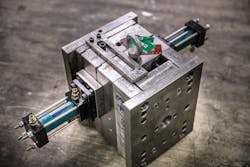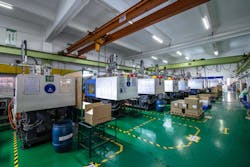If Netflix were to create a new series about a modern product designer, central casting might create a character by crossing an architect from the 1960s with Sheldon from “The Big Bang Theory.” Like most casual viewers, they envision a one-dimensional, somewhat introverted person tasked with designing everything from new airplanes to toothbrushes using computers and drafting boards.
But the truth is much more nuanced. Perhaps someone like Willie Wonka would be more accurate—a renaissance persona passionately committed to a vision who is tasked with everything from sourcing products to designing and testing them to the eventual marketing.
Funny hat and tuxedo aside, hardware designers back up this concept of a Jack-or-Jill-of-all-trades, with 61% of those who participated in the recent “State of Hardware Report” saying they are often doing work outside of their core job responsibilities. In fact, non-technical soft skills such as patience, listening, and communication were deemed the most valuable new skills participants said they learned in 2018.
Injection molding tool.
This gap between our understanding of the job and what designers say they actually do on a daily basis exists because the industry has changed so dramatically so quickly. It is no longer one with neatly segmented jobs. External pressures such as emerging technologies, shifting supply chains, and productivity expectations have forced product designers to rapidly evolve their roles.
When 43% of companies say they do not have adequate resources to manage manufacturing and 62% noting tariffs as increasing their costs, it makes sense that teams must squeeze out efficiencies in new places (namely, staff).
As a result, today’s product designers and those entering the field must demonstrate a broader set of talents than previous generations to succeed.
Develop soft skills. Designers can look to the broader IT industry for examples of how to survive and even prosper within this new reality. This list of 14 soft skills every IT pro needs in CIO Magazine is a great playbook. Designers must obviously demonstrate good verbal and written communication skills, but learning salesmanship and emotional intelligence are likely new job descriptions for most.
This is necessary as product designers must become advocates for their work and interface with more people up and down the development cycle. From customer focus groups to manufacturing partners to external sales and marketing agencies, product designers must increasingly explain and evangelize their creations.
Dave Evans working with Fictiv team.
Embrace new technology tools. For years, the hardware design industry has been managed using outdated spreadsheets, faxes, and late-night calls to overseas manufacturing partners. But much like the software industry, hardware developers are transitioning to a number of new technology-based tools and platforms to realize greater efficiency and improved outcomes.
As the persons increasingly tasked with designing these products, architecting the supply chain, and managing manufacturing, it is critical that designers learn how to maximize these emerging tech tools. From new project-based communication and workflow tools like Slack, Asana, and Trello to the growth of virtual contract manufacturing platforms, these are here to stay. Successful designers must demonstrate a familiarity and proficiency with any number of them.
Injection molding machines on the factory floor of a Fictiv manufacturing partner in Guangzhou, China.
Demonstrate lateral thinking to solve problems. Engineers are notoriously left-brained with strong analytical skills. Today’s businesses demand they expand on those skills to engage the critical and creative thinking sides of our brains.
Lateral thinking involves solving problems through an indirect and creative approach, using reasoning that is not immediately obvious and involving ideas that may not be obtainable by using only traditional step-by-step logic or simple analysis. Whereas left-brain thinking tries to meet problems head-on, lateral thinking wants to bypass problems completely with a radically different approach.
And, experts say to never think of creative thinking vs. analytical thinking as conflicting with each other, but instead challenge yourself to do both while acknowledging that one may come easier than the other. This skill is critical as designers work to navigate overtaxed supply chains, last-minute go-to-market problems, and inter-team roadblocks.
No matter the sector, it is critical that we train a future workforce that can operate with more than just strong analytical skills and the ability to focus well on closed-ended problems. To innovate and lead, our educational system and companies must train well-rounded, proficient designers who can think creatively and attack problems using all the tools in their arsenal.
Dave Evans is the CEO and co-founder of Fictiv.




